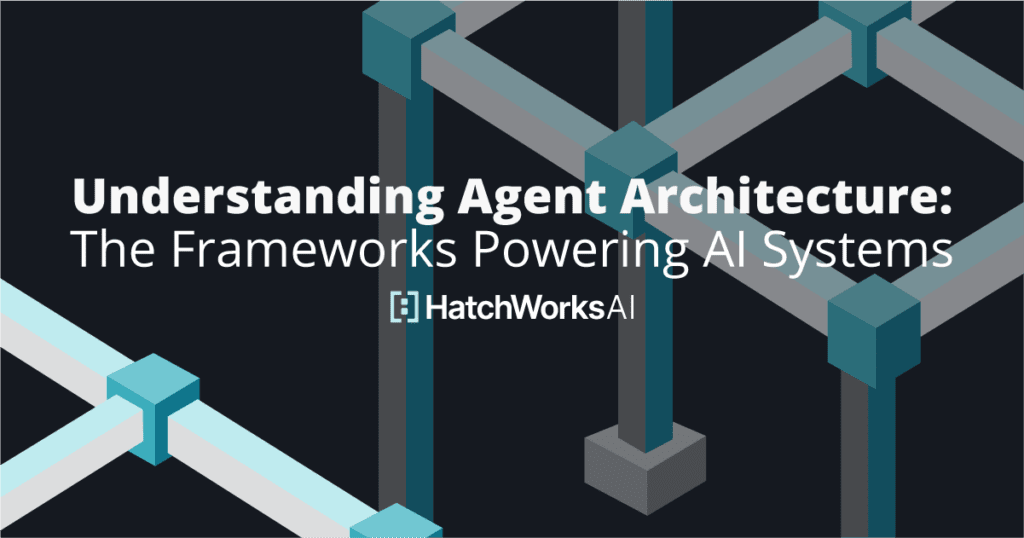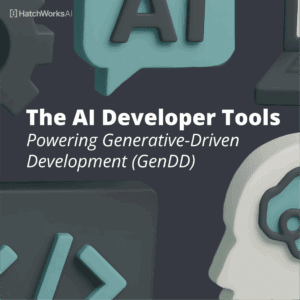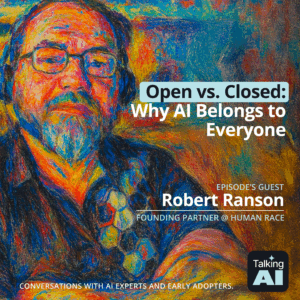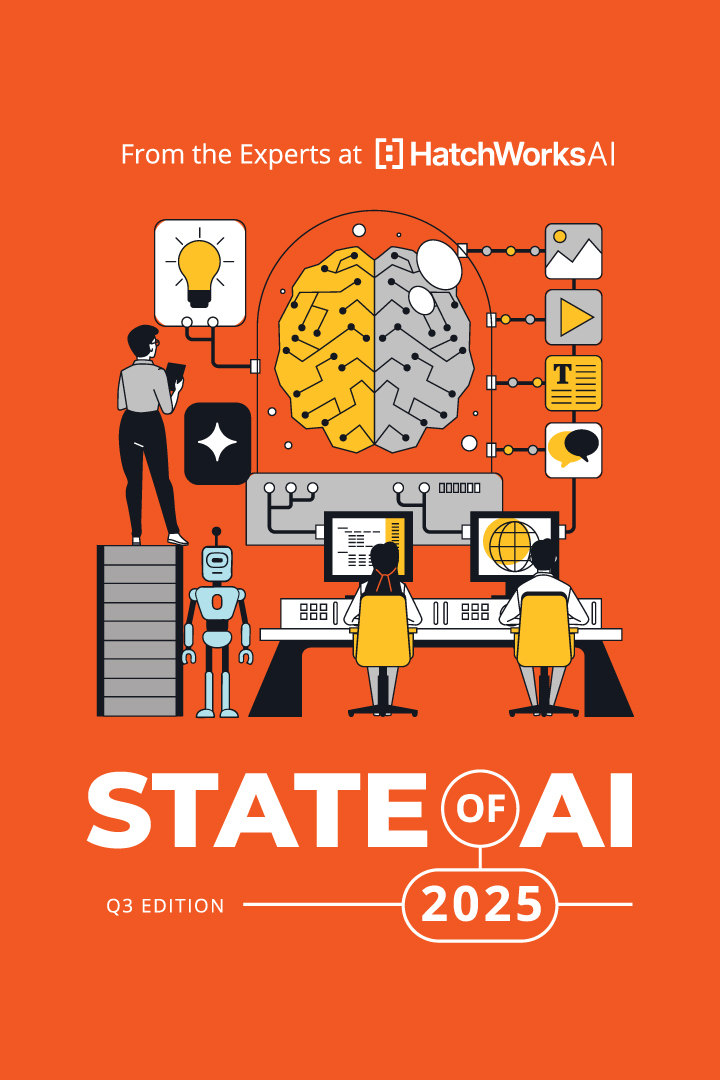AI agents are becoming increasingly sophisticated, capable of handling complex tasks, making real-time decisions, and autonomously interacting with digital and physical environments. They can even interact with other agents.
But how are they built? This article explores the different architectures that make up AI agents as we know them.

What is AI Agent Architecture?
AI agent architecture is the structural design of an autonomous agent. It determines how that agent processes information, makes decisions, and interacts with its environment.
Agent architecture integrates sensors, processing mechanisms, and actuators to create a structured system capable of operating in dynamic and unpredictable environments.
This is why it’s essential in applications like autonomous vehicles, surveillance systems, and AI-driven automation.
Different architectures suit different levels of autonomy and complexity. The four main types include:
- Reactive architectures
- Deliberative architectures
- Hybrid architectures
- Layered architectures
🔍 Learn more about the functions, types, and applications of AI agents.
Types of Agent Architectures
We’ve just mentioned four agent architecture types but left out what they look like and what they’re capable of. Let’s go over what they are and where they’re relevant.
Reactive Architectures: Fast but Limited
Reactive agents operate purely on stimulus-response behavior—they don’t plan ahead or store memory. These agents analyze the environment in real time and respond immediately, making them ideal for fast, low-complexity tasks.
Real world example: Autonomous vacuum cleaners use a reactive approach to avoid obstacles and adjust movement based on sensor input.
| Best for: | Limitations: |
|---|---|
|
High-speed, real-time decision-making where predefined responses are enough.
|
No memory or long-term learning—agents can’t adapt beyond their programming.
|
Deliberative Architectures: Thoughtful but Slower
Deliberative agents build and maintain an internal model of the world, using symbolic reasoning to plan actions.
They evaluate multiple possible actions before making a decision, prioritizing accuracy over speed.
Real world example: A robotic warehouse picker uses a deliberative model to determine the most efficient route to retrieve an item based on real-time inventory and order demand.
| Best for: | Limitations: |
|---|---|
|
Tasks requiring complex decision-making, reasoning, and long-term planning.
|
Slower response time and high computational cost—not ideal for real-time systems.
|
Hybrid Architectures: A Balanced Approach
Hybrid agents combine reactive and deliberative methods, allowing for both quick responses and high-level reasoning. They can react instantly to simple stimuli while also engaging in deeper planning when necessary.
Real world example: Self-driving cars use a hybrid approach—reactive behaviors handle immediate road hazards, while deliberative reasoning plans optimal routes and maneuvers.
| Best for: | Limitations: |
|---|---|
|
Systems that need a balance between speed and adaptability.
|
More complex to design and requires careful integration of both approaches.
|
Layered Architectures: Organizing Complexity
Layered architectures divide agent processing into multiple levels, where each layer has specific responsibilities. Lower layers handle real-time responses, while higher layers perform long-term planning and reasoning.
Real world example: AI-powered cybersecurity systems use layered architectures—low-level layers detect immediate threats, while higher layers analyze trends and plan mitigation strategies.
| Best for: | Limitations: |
|---|---|
|
Systems requiring hierarchical control, such as multi-agent coordination or complex automation.
|
Can introduce latency if layers need to process large amounts of information before executing actions.
|
Breaking Down Complexity: How AI Agents Solve Multi-Step Problems
AI agents can handle complex problems by decomposing queries, planning, and creating a sequence of events:
- Decomposing the Problem: The agent breaks a large, complex task into smaller, manageable sub-tasks.
- Planning the Execution: Using a decision-making framework, the agent determines the optimal sequence of actions to complete the goal.
- Executing and Adapting: The agent performs tasks iteratively, making adjustments based on new information.
But for an AI agent to properly handle complex tasks, they need the right architecture. For example, a reactive agent wouldn’t be able to plan ahead, but a deliberative or hybrid agent can evaluate long-term outcomes and adjust strategies accordingly.
You can customize these architectures to different agents, tuning them for the tasks they need to complete and the response time required.
🚀 Learn how AI agents can multiply your workforce’s productivity.
Designing Effective AI Agent Architecture
AT A GLANCE
Here are some key considerations that can guide your process:
- Does the agent need rule-based logic, probabilistic reasoning, reinforcement learning (RL), or a mix of these?
- Should the agent remember past interactions (e.g., using vector databases like FAISS or ChromaDB)?
- Will the agent interact with external tools, databases, or third-party APIs to retrieve and execute actions?
- Does the agent require instant decision-making (e.g., real-time traffic navigation) or can it work in longer cycles (e.g., financial forecasting models)?
To customize an agent, or ‘design’ it, you’ll need to evaluate what it is you really need from it.
One of the first considerations in designing an AI agent architecture is decision-making.
Agent architectures can be designed to rely on reinforcement learning, LLM calls, or API calls to achieve specific goals.
The complexity of the task often dictates the approach.
A real-time logistics agent optimizing delivery routes may need an RL-based model to continuously improve its efficiency, while an AI legal assistant may rely on LLMs to analyze case law and provide structured arguments.
Beyond decision making capabilities, memory and context retention play a critical role in how an agent functions over time.
Agents that interact with users, such as AI-driven customer support systems, need to remember past interactions and preferences, often relying solely on vector databases like FAISS or ChromaDB. On the other hand, transactional agents—such as automated trading systems—operate in a stateless manner, processing each decision in isolation.
Agents also differ in how they execute tasks.
Some function autonomously through API-driven architectures, where they retrieve information, trigger workflows, and integrate with third-party services. Others use function calling mechanisms to extend their capabilities, enabling them to interact dynamically with tools, databases, or even other agents.
In highly complex environments, multi-agent architectures are employed, where multiple agents coordinate to solve a problem with one handling data retrieval, another optimizing solutions, and another executing the final action.
🤖 Explore how multi-agent systems enhance decision-making
Don’t Forget to Build Reliable Communication Between Components
AI agents often interact with multiple subsystems, requiring structured data exchange and communication methods.
Common techniques include:
- Structured Outputs: Using JSON, XML, or other standardized formats ensures consistency in data exchange between different components.
- Retrieval-Augmented Generation (RAG): Enables LLM-powered agents to retrieve knowledge dynamically, improving accuracy over static models.
- Multi-Agent Coordination: Systems like CrewAI or LangChain help orchestrate multiple agents working in parallel on different subtasks.
The Role of Tools in Agent Architectures
Tools are the bridge between AI agents and the external world. Without them, an agent is limited to internal processing. And thus unable to interact with databases, execute commands, or retrieve real-time information.
Some agents are built with rigid integration, meaning they rely on a fixed set of tools programmed into their design.
These systems are efficient for predictable workflows but struggle to adapt to new tasks. This approach works well for highly specialized AI systems, such as rule-based automation in financial auditing or compliance monitoring, where the tasks remain consistent over time.
On the other end of the spectrum, modular and dynamic tool use allows an agent to select from multiple tools based on the task at hand.
Instead of being limited to predefined capabilities, the agent can dynamically decide which tool to use, enabling more complex decision-making and problem-solving.
This approach is essential for general-purpose AI agents that require multi-step reasoning, such as AI research assistants that retrieve and synthesize information from multiple sources or LangChain-powered agents that interact with APIs and databases to generate informed responses.
Types of Tools
AI agents rely on different types of tools depending on the complexity of the task and the level of interaction required:
| Tool | About the tool | Example |
|---|---|---|
|
Computational Tools
|
Internal algorithms, solvers, or ML models that enhance an agent’s reasoning and decision-making.
|
A financial forecasting agent using Monte Carlo simulations to predict stock trends.
|
|
External API Calls
|
Connectors that allow agents to retrieve real-time data, automate workflows, or trigger actions in external systems.
|
A travel booking AI using airline and hotel APIs to check availability and book reservations.
|
|
Scripting & Code Execution
|
Enables AI to generate, modify, and execute scripts or queries dynamically.
|
An autonomous cybersecurity agent adjusting firewall rules in response to threats.
|
|
Humans-in-the-Loop
|
Used in high-risk scenarios where AI decisions require human validation before execution.
|
A legal AI assistant that drafts contracts but requires a lawyer’s approval before finalizing them.
|
Overcoming Challenges in Agent Architectures
Without thoughtful design, agents can become inefficient, get stuck in decision loops, or fail to execute actions correctly.
One of the primary challenges is long-term planning.
While reactive agents can handle simple, immediate tasks, more sophisticated agents must be able to think ahead, anticipate potential failures, and adjust their approach dynamically.
A key solution is mapping the solution space beforehand—giving the agent a structured way to understand possible decisions and their downstream effects.
By reducing ambiguity and predefining decision pathways, agents can operate more efficiently and avoid unnecessary trial-and-error cycles.
Another issue is the vastness of the solution space itself.
When an agent has too many possible actions, it can struggle to determine the optimal course.
This is where domain-specific heuristics and business rules become critical. Instead of relying purely on a model’s internal logic, AI agents can incorporate external guidance systems that help them prioritize relevant actions and filter out irrelevant ones.
For example, in an autonomous research assistant, embedding knowledge about relevant sources, citation formats, and verification steps can significantly enhance the agent’s effectiveness.
Finally, there’s malformed tooling calls—where an agent incorrectly interacts with APIs, scripts, or external systems.
The best way to address this is to be explicit about action intentions before execution. By ensuring that an agent clearly defines its goal, checks for required parameters, and verifies tool compatibility, errors can be minimized.
Additionally, creating a repeatable process for tool execution and error handling improves reliability over time, allowing agents to learn from past failures rather than repeating them.
Building Smarter AI Agents for Real-World Impact
Designing agent architectures that can plan, adapt, and execute reliably is what separates successful AI implementations from failed experiments.
At HatchWorks AI, we specialize in helping businesses design, deploy, and optimize AI agent architectures that seamlessly integrate with their existing workflows.
We can build AI solutions for you, train your team on how to do it themselves, or integrate our AI experts directly into your team.
Want to explore how HatchWorks AI equips you with the resources and support you need so that your AI efforts don’t go to waste?
Identify Your Top AI Agent Use Cases
The AI Agent Opportunity Lab helps you discover and prioritize high-impact AI agent opportunities tailored specifically to your business objectives.




